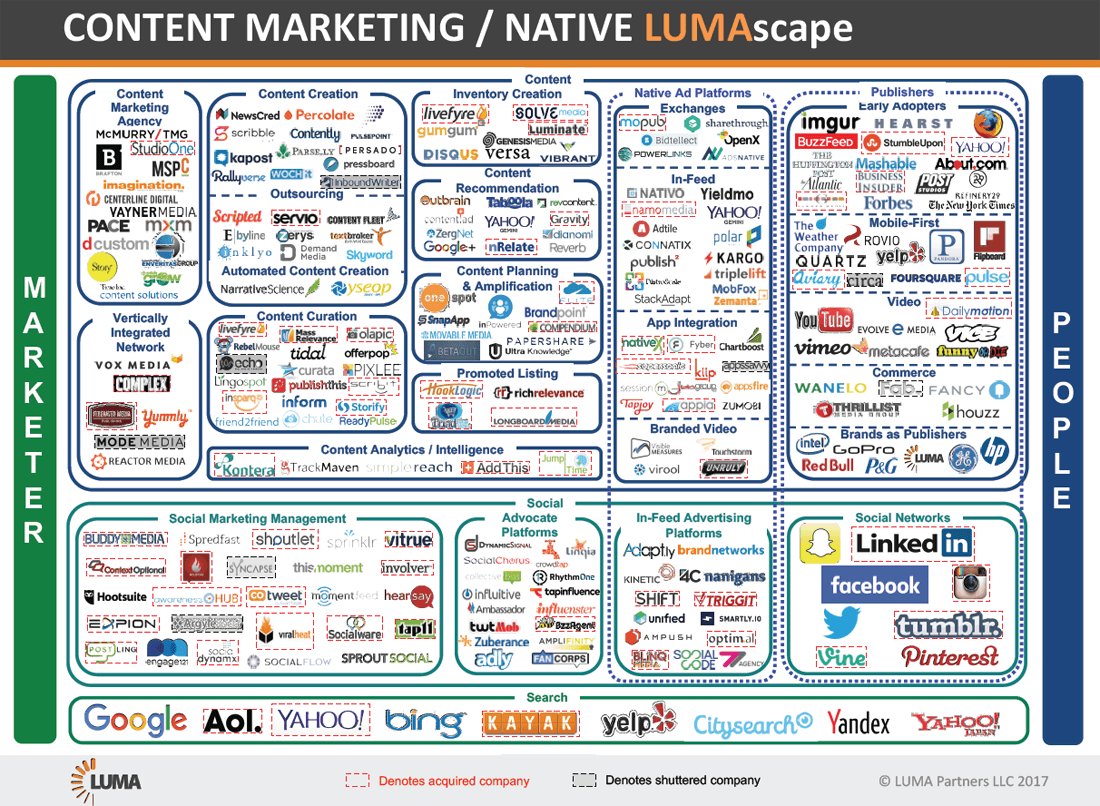Breaking Down Your Website Ad Spend: Why It Matters.

by Sam Goldberg
16 Jan, 2023
Every once in awhile something new pops up that is worth noticing. No, I am not talking about salty caramel flavored ice cream, although I must say, that was a heck of an innovation!
In this case I am talking about on-screen advertising. Once upon a time, someone decided putting products on TV screens was a good idea. Then it was the Internet's turn. Ads started, literally, popping up everywhere. It wasn't long before consumer ad technology advanced past this via pop up blockers, and then ad blockers all together.
As a result, advertisers started writing content to lead consumers to believe they were reading an article when they were really reading an ad. Movie theaters got into the act and started advertising before movie showings. Today, pretty much every screen we come into contact with t is pouring ads at us as fast we can move past them.
Throughout this process something funny happened - ad targeting. While this was pretty far afield from personalization in advertising, targeting still generated a higher likelihood of interest for the consumer than non-targeting. If you're outdoorsy, then an ad for Cabela's is probably more interesting to you than an ad for Pottery Barn.
Targeting made things a little better for the consumer, and theoretically a lot better for the advertiser. Why waste ad spend on the wrong audience?
Another set of technology solutions evolved that benefited online advertisers-tracking technologies. Every marketing department on earth that wants to keep their jobs, would like to know where their marketing spend is most effective.
Trackers will also tell you what type of interaction customer one had with your ad as well as the interactions with your website after the ad was seen.
Like many good ideas, the solutions remain incomplete. Reliability and accountability fell by the wayside, and opaque technologies popped up claiming to arrive at solutions, however these "solutions" were based on "trust me" technologies. By "trust me" I mean the inventor of the technology was not audited, could not be audited frequently enough for it to be verifiable, or actually refused to be audited. Oftentimes, if they were audited, the advertiser would still have no reliable way of knowing that the reporting from the technology was accurate.
Like most industries, transparency often comes later in the game. In the advertising technology industry, there is far too little transparency and separation between different companies. That's why you can get an overwhelm when viewing any of the LUMAscape visuals of companies - just look at the content marketing/native landscape:

The landscape is confusing and difficult to understand. To make matters worse, like many industries (see legal, accounting, and medical industries), advertising technology companies adopted confusing jargon and lingo to shelter those in-the-know of the morass from penetrating questions from those not in-the-know.
It is a natural evolution for industries to mature and finally deliver transparency and trust worthiness to its customers. That time is fast approaching for the advertising industry, and it can't come soon enough.
About the Author
Sam Goldberg is an entrepreneur, founder of multiple companies, and ad tech industry veteran. He specializes in business growth and partnerships. His newest venture, Kr8os, is poised to revolutionize the ad landscape.
In this case I am talking about on-screen advertising. Once upon a time, someone decided putting products on TV screens was a good idea. Then it was the Internet's turn. Ads started, literally, popping up everywhere. It wasn't long before consumer ad technology advanced past this via pop up blockers, and then ad blockers all together.
As a result, advertisers started writing content to lead consumers to believe they were reading an article when they were really reading an ad. Movie theaters got into the act and started advertising before movie showings. Today, pretty much every screen we come into contact with t is pouring ads at us as fast we can move past them.
Throughout this process something funny happened - ad targeting. While this was pretty far afield from personalization in advertising, targeting still generated a higher likelihood of interest for the consumer than non-targeting. If you're outdoorsy, then an ad for Cabela's is probably more interesting to you than an ad for Pottery Barn.
Targeting made things a little better for the consumer, and theoretically a lot better for the advertiser. Why waste ad spend on the wrong audience?
Another set of technology solutions evolved that benefited online advertisers-tracking technologies. Every marketing department on earth that wants to keep their jobs, would like to know where their marketing spend is most effective.
- What ads create new customers?
- Which publishers drive customers to businesses?
- Is an ad on website XYZ 10 times more likely to convert a customer than an ad on website ABC?
Trackers will also tell you what type of interaction customer one had with your ad as well as the interactions with your website after the ad was seen.
Like many good ideas, the solutions remain incomplete. Reliability and accountability fell by the wayside, and opaque technologies popped up claiming to arrive at solutions, however these "solutions" were based on "trust me" technologies. By "trust me" I mean the inventor of the technology was not audited, could not be audited frequently enough for it to be verifiable, or actually refused to be audited. Oftentimes, if they were audited, the advertiser would still have no reliable way of knowing that the reporting from the technology was accurate.
Like most industries, transparency often comes later in the game. In the advertising technology industry, there is far too little transparency and separation between different companies. That's why you can get an overwhelm when viewing any of the LUMAscape visuals of companies - just look at the content marketing/native landscape:

The landscape is confusing and difficult to understand. To make matters worse, like many industries (see legal, accounting, and medical industries), advertising technology companies adopted confusing jargon and lingo to shelter those in-the-know of the morass from penetrating questions from those not in-the-know.
It is a natural evolution for industries to mature and finally deliver transparency and trust worthiness to its customers. That time is fast approaching for the advertising industry, and it can't come soon enough.
About the Author
Sam Goldberg is an entrepreneur, founder of multiple companies, and ad tech industry veteran. He specializes in business growth and partnerships. His newest venture, Kr8os, is poised to revolutionize the ad landscape.








